Let’s be honest — a weak subject line can kill your apology before it's even read. In fact, according to SuperOffice, 33% of recipients open emails based on subject line alone. That’s why nailing the subject line for apology email isn’t optional—it’s the whole game.
Whether you're fixing a billing error, owning up to a missed deadline, or apologizing for a wrong message, this guide gives you 30+ tested subject lines (and scripts) to make things right fast. Let’s fix that inbox mess—together.
Why the Right Subject Line for Apology Email Matters
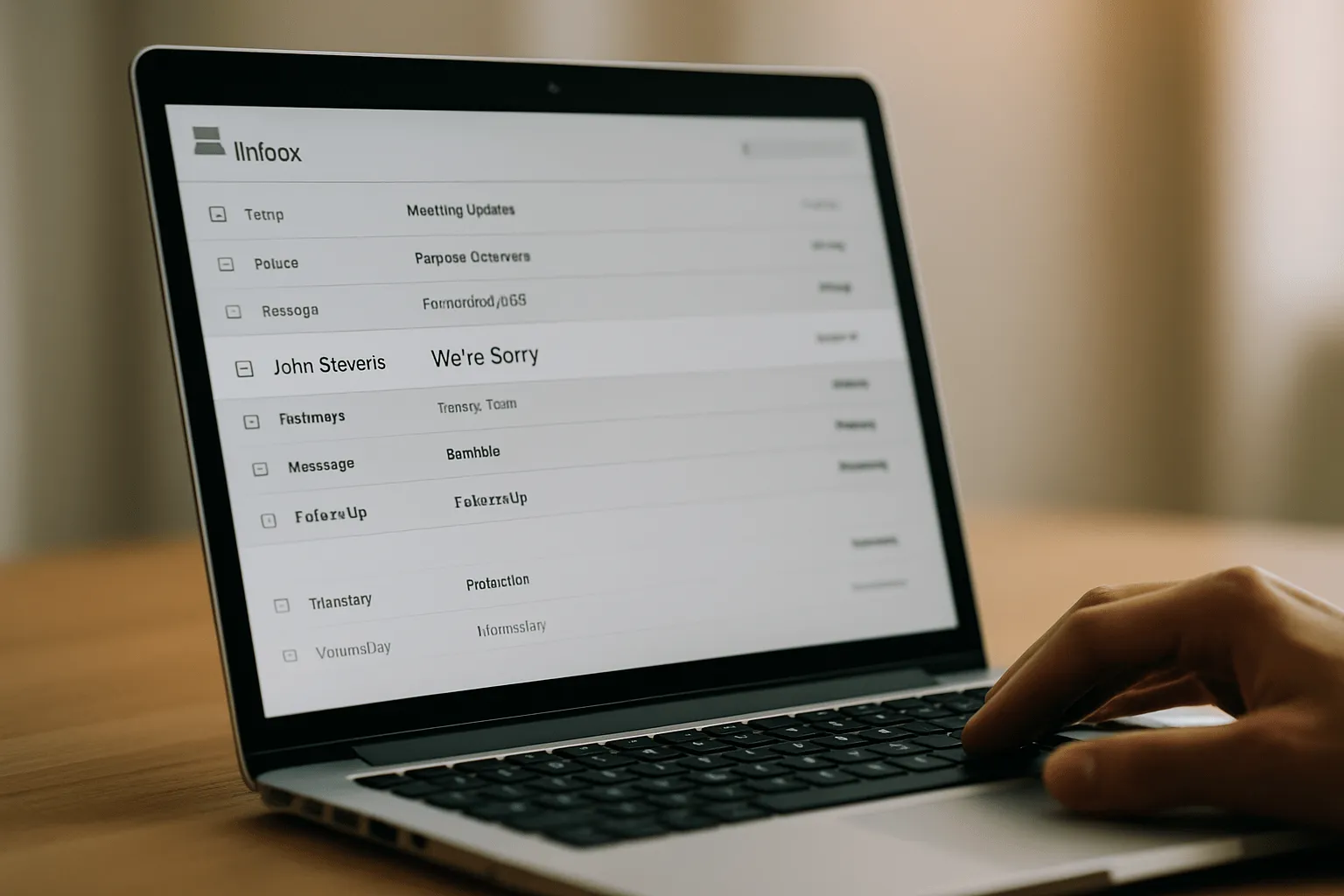
The subject line is the first thing your recipient sees, and it sets the tone for the entire email. A well-crafted subject line can make the difference between your apology being read and appreciated or ignored altogether.
1. It Determines Whether Your Email Gets Opened
Let’s be real—if your email doesn't get opened, your apology won’t be read. According to SuperOffice, 33% of people open emails based on the subject line alone. That’s why using a clear, honest message and sincere apology in the subject line is so important. It grabs attention and sets the right tone.
A subject line like “We Deeply Regret the Recent Mistake” works better than a vague one like “Update.” Why? Because it sounds human, not robotic. So next time, write an email subject line that shows care and ownership.
2. It Shows You’re Taking Full Responsibility
A subject line for apology email should make it clear that you’re not passing blame. Phrases like “We Take Full Responsibility” or “Correction: Our Mistake, Fixed” instantly build trust.
Use direct subject lines like “We’re Correcting a Regrettable Mistake” to show ownership.
It also helps when you sincerely apologize using honest words like “deeply apologize” or “express regret.” When people see this right in the subject, they know you’re serious.
3. It Helps Defuse Anger or Disappointment
Let’s say your customer got incorrect information or a billing error. A quick subject line like “Our Apologies for the Confusion – Please Read” can stop frustration before it grows.
A heartfelt apology right up top lowers tension and makes readers more open to your explanation. Just one line can start to rebuild trust.
4. It Reflects the Professionalism of Your Brand
Your apology email subject lines speak for your brand. A thoughtful subject line shows that your team takes corrective measures and respects the reader’s time.
If you send a formal apology or use a professional apology email, your subject line should match. For example: “Apology from [Company Name] – We’re Making It Right.”
This not only shows sincere regret but also protects your brand's reputation. As HubSpot notes, “consistency and tone in email matters just as much as the content.”
40+ Best Apology Email Subject Lines Categorized by Situation

1. Apology for Missed Deadlines or Short Notice
Missed a deadline or sent a message too late? You're not alone. These apology email subject lines help you admit the delay, take full responsibility, and show your customers you care. Use one of these when you’re short on time—but want your apology to land the right way.
2. Subject Lines for Billing Error, Data Breach, or Incorrect Information
Mistakes happen—especially in invoices, personal data, or product info. From the customer’s perspective, when trust is at risk, the right subject line for apology email can calm nerves and show accountability.
These subject lines are perfect when you need to own up to a billing error, data breach, incorrect charges, or incorrect information sent out.
When addressing issues like incorrect charges, it's important to provide details about the error and the steps taken to correct it, either in the subject line or within the body of your apology email.
3. Personal Apology Subject Lines for a Wrong Message or Wrong Person
Mistakes happen—especially in invoices, personal data, or product info. When trust is at risk, the right subject line for apology email can calm nerves and show accountability. These subject lines are perfect when you need to own up to a billing error, data breach, or incorrect information sent out.
Always double-check the recipient name before sending to avoid mistakes like emailing the wrong list. Personalizing your apology by correctly using the recipient name helps maintain trust and professionalism.
4. Professional Apology Email Subject Lines for Clients and Partners
Business errors don’t just cost time—they can affect partnerships. Whether it’s a recent mistake or a missed expectation, these professional apology email subject lines show that your company owns it. Use them when writing to clients, stakeholders, or vendors to maintain trust and credibility.
When your brand’s reputation is at risk, crafting an important apology email with the right tone is non-negotiable.
If the issue is serious, consider writing a formal apology letter in addition to your email.
5. Heartfelt Apology Subject Lines for Poor Service or Inconvenience Caused
Poor service? Long hold times? Frustrated customers? These are the moments where a heartfelt apology really matters. This set of subject lines helps you show sincere regret, express empathy, and start rebuilding relationships after a bad customer experience.
How to Write a Sincere Apology Email (Step-by-Step Guide)
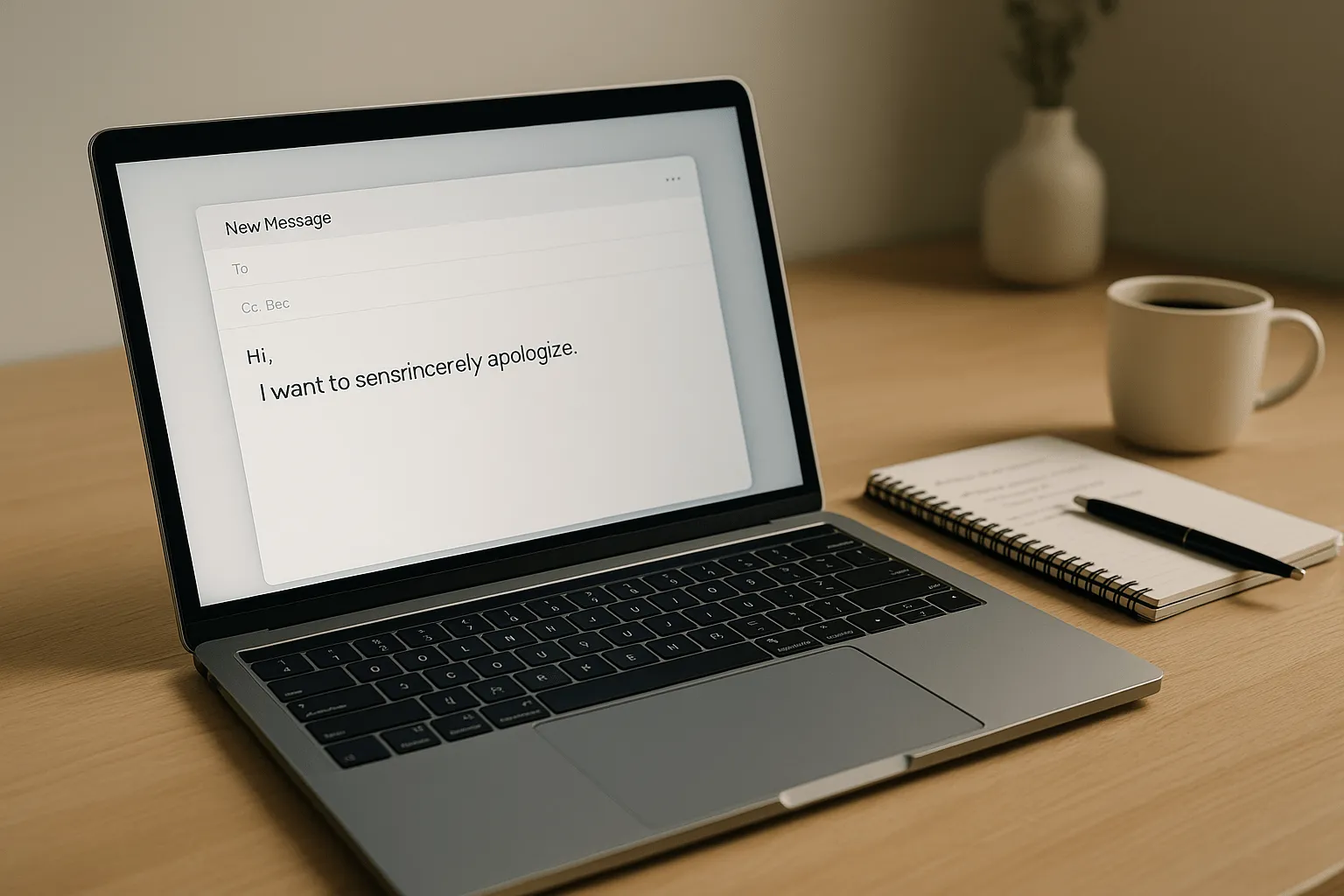
When crafting an apology email, it’s crucial to address the issue clearly, take responsibility, and express genuine regret.
Additionally, outlining the immediate steps being taken to resolve the issue and prevent it from happening again demonstrates accountability and reassures the recipient that action is underway.
This guide will walk you through each stage to ensure your apology is both effective and sincere.
1. Start With the Right Subject Line for Apology Email
Your subject line is the first thing people see. If it doesn’t look genuine, they might never open your message. That’s why your subject line for apology email needs to be clear, honest, and show sincere regret.
What to do: Use words like:
- “We Apologize for the Confusion”
- “Correction: Our Mistake, and We’re Fixing It”
- “We Deeply Regret the Inconvenience Caused”
A study by SuperOffice found that 33% of email recipients open emails based on subject line alone. So if your line sounds robotic or vague, they’ll likely skip it. An effective subject line is short, sincere, and instantly signals accountability to the reader.
Always double-check for grammatical errors before sending your apology—small mistakes can damage trust further.
Tip: Avoid passive phrases like “An error occurred.” Instead, say “We take full responsibility for the error.”
2. Use a Personalized Greeting
You can’t send a professional apology email and start it with “Hi there.” That feels cold. Personalizing the greeting shows that you care.
How to do it:
- Start with their name: Hi Sarah, or Dear Mr. Allen,
- Use a personalized greeting that feels respectful.
Bonus: Mention your company name if you’re emailing on behalf of a team: “On behalf of [Company Name], I want to sincerely apologize…”
Why it works: It builds a personal connection right away and reminds the reader that you see them as more than a number.
3. Acknowledge the Mistake Clearly

This part is simple: own the mistake. Whether it’s incorrect information, late response, or poor service, don’t dodge the issue.
What to say:
- “We recognize the error in our previous email.”
- “We gave you the wrong info—and we’re truly sorry.”
- “There was a delay, and we deeply regret the impact it caused.”
It’s important to acknowledge the trouble caused by the mistake to show empathy and responsibility.
What not to say: Avoid lines like: “If you were affected…” That sounds like you’re unsure. Instead, use language that shows you take responsibility.
Why this matters: Being honest helps rebuild trust. It also shows you’re committed to corrective measures, not just words.
4. Convey Sincere Regret Without Over-Explaining
You need to say you're sorry and mean it. But don’t go on and on. Keep it honest and to the point.
How to do it: Show sincere regret in your words. Use simple phrases that sound human—not like a corporate robot.
Try:
- “We’re truly sorry for the inconvenience caused.”
- “We deeply regret the error in our last message.”
- “Please accept our heartfelt apology.”
Don’t do this: Avoid excuses like: “Due to unforeseen technical difficulties…”
It sounds like you're dodging blame. Your readers want a sincere apology, not a legal defense.
Why it matters: A sincere tone helps you connect emotionally. It shows your reader that you care about their experience and your apology email isn't just a checkbox.
5. Explain Briefly (Only If Necessary)
Sometimes, your reader wants to know what happened. But not always. Give a brief explanation only if it helps—not to justify your mistake.
How to do it: Use clear, simple lines like:
- “We sent the wrong invoice due to a system error.”
- “There was a typo in our previous email that caused confusion.”
- “Your account was affected by a billing error, which we’ve now fixed.”
When appropriate, provide details about what happened and what steps you are taking to prevent it from happening again. This helps reassure your reader and shows transparency.
If you sincerely apologize and take ownership, your reader is more likely to understand.
Don’t overshare: You don’t need to explain your whole workflow. Stick to facts.
Pro tip: If you’re correcting incorrect information, say it directly in the subject line for apology email, like: “Correction: We Sent the Wrong Info – Here’s the Fix.”
6. Mention What Immediate Action You’re Taking to Fix the Issue

Telling the reader what steps you’ve taken is key. It shows you’re not just sorry—you’re fixing the problem.
How to do it: Examples of clear immediate action:
- “We’ve corrected the invoice and re-sent it to your email.”
- “Our tech team has patched the error to prevent this from happening again.”
- “We’ve issued a refund and updated your records.”
Use action words like “fixed,” “corrected,” or “updated” to sound accountable. It helps to include this both in the email body and the apology email subject lines when possible.
7. Offer a Path Forward
Don’t just say sorry. Show the reader what happens next. Offering a way to rebuild trust shows maturity and professionalism.
How to do it: After you apologize and take full responsibility, give your customer a reason to continue the relationship. This is your moment to take action and make it right.
Say things like:
- “We’d love a chance to make it up to you.”
- “Here’s what we’re doing to ensure this doesn’t happen again.”
- “We hope to move forward with better service and clearer communication.”
Bonus tip: If you’re offering a refund, discount, or timeline fix, mention it. That builds real goodwill.
According to Zendesk, 52% of customers say a good apology and fast solution makes them more loyal after a bad experience.
This helps the reader feel heard—and shows your apology email is more than just words.
8. Close with Warm, Professional Sign-Off
Don’t end your email abruptly. A good ending adds the personal touch your reader needs to feel respected.
How to do it: Use a kind, human closing such as:
- “Warm regards,”
- “Best regards,”
- “Kind regards,”
Then sign off with your name and company name. If you're replying to a previous email, reference that thread. It shows you’re paying attention.
Pro tip: Use language that encourages future contact. Try:
- “Please let us know if you have any further questions.”
- “We appreciate your continued support and patience.”
Scripts to Use with Apology Email Subject Line
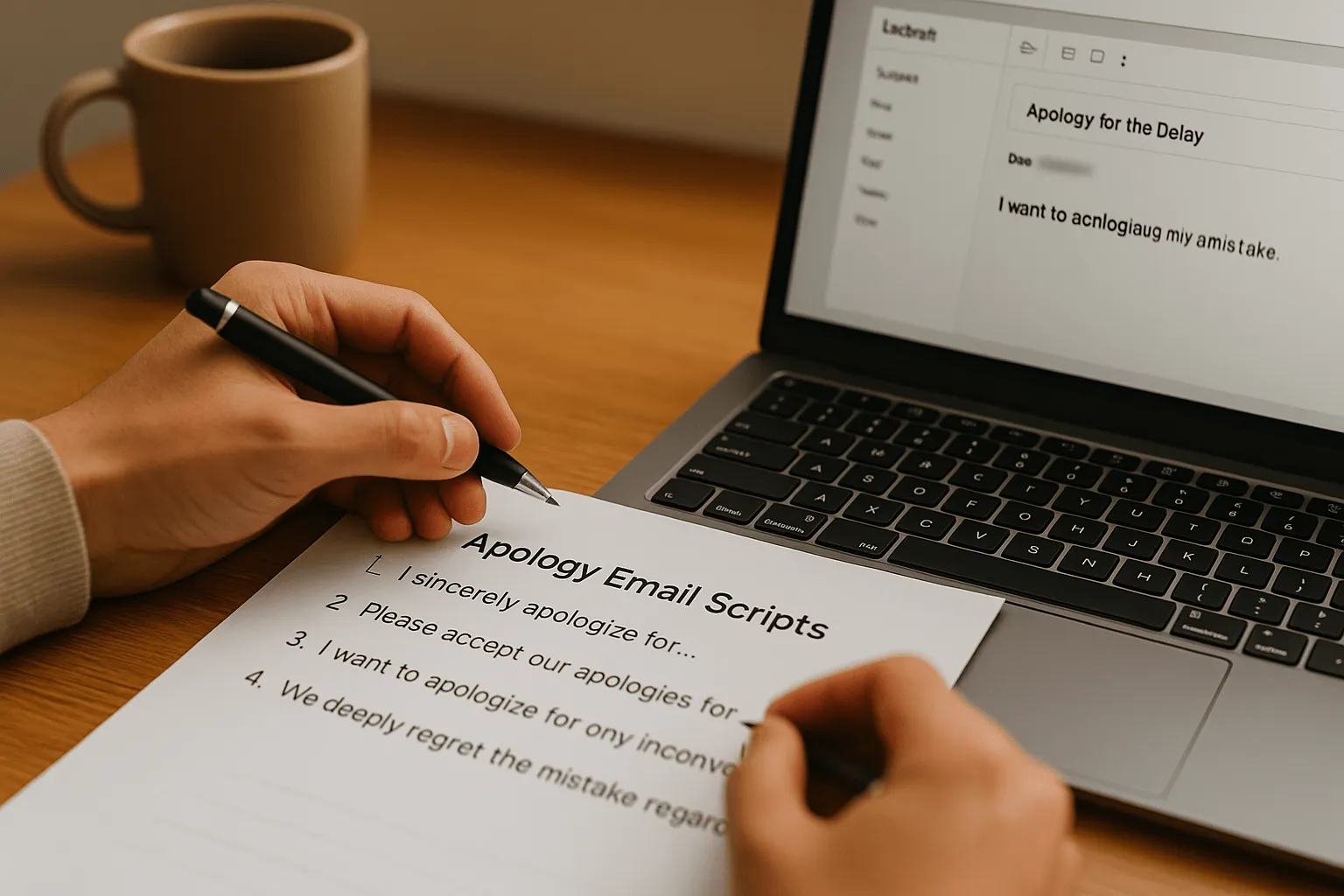
When crafting an apology email, it's important to address specific issues your customer may have experienced. Below are some script examples you can use, including a new script for situations where a customer received the wrong product.
Quick Apology Email Templates You Can Copy
Script 1: Apology for Poor Service
Script 2: Apology for Incorrect Information Sent
Script 3: Formal Apology from a Business
In formal cases, phrases like “We greatly apologize for the inconvenience” show humility and accountability.
Script 4: Apology for Missed Deadline
Script 5: When You’re Following Up on a Previous Email
Tips to Rebuild Trust and Mend Relationships Through Email
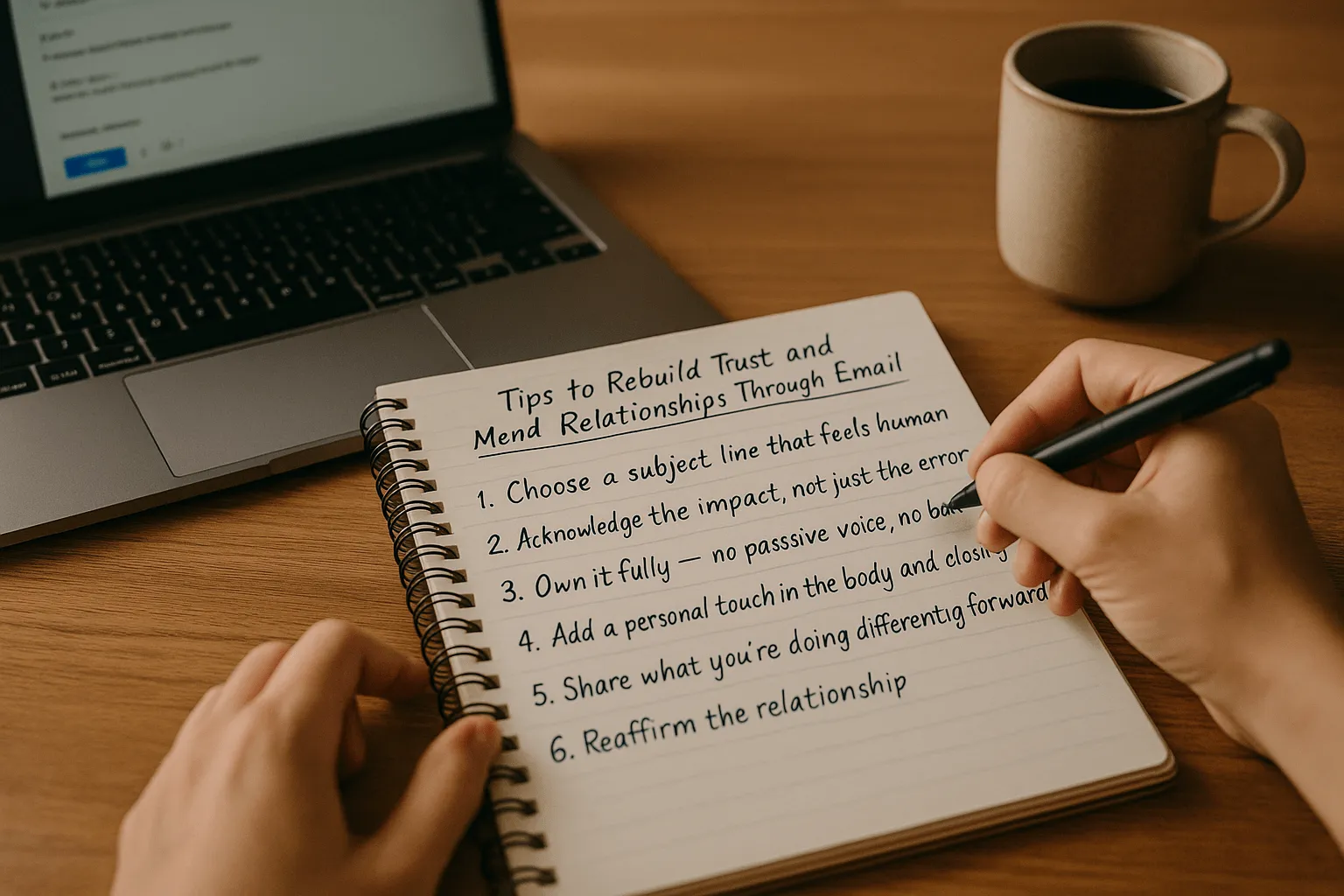
1. Choose a Subject Line That Feels Human, Not Robotic
Use words that sound real and personal. Avoid cold or automated language.
How to do it: Use subject lines like:
- “We’re Truly Sorry for the Confusion”
- “Our Mistake — Let Us Make It Right”
- “Sincere Apology from [Company Name]”
These show sincere regret and feel like they’re coming from a real person—not a bot. That’s important if you want to mend relationships.
2. Acknowledge the Impact, Not Just the Error
Don’t just admit the incorrect information or poor service. Acknowledge how it affected the customer.
How to do it: Say things like:
- “We know this delay caused inconvenience.”
- “You deserved better—we let you down.”
- “We understand how this mistake affected your day.”
You’re not just sending an apology email. You’re showing that you care about their time, trust, and experience.
3. Own It Fully — No Passive Voice, No Blame
Take full responsibility without shifting blame. Say “we” did it—not “a problem occurred.”
How to do it: Be clear:
- “We sent the wrong message.”
- “We caused the billing error.”
- “We take responsibility for the delay.”
Don’t say: “There was a system error” or “Your account had a glitch.” Those avoid blame. Customers see right through it.
4. Add a Personal Touch in the Body and Closing
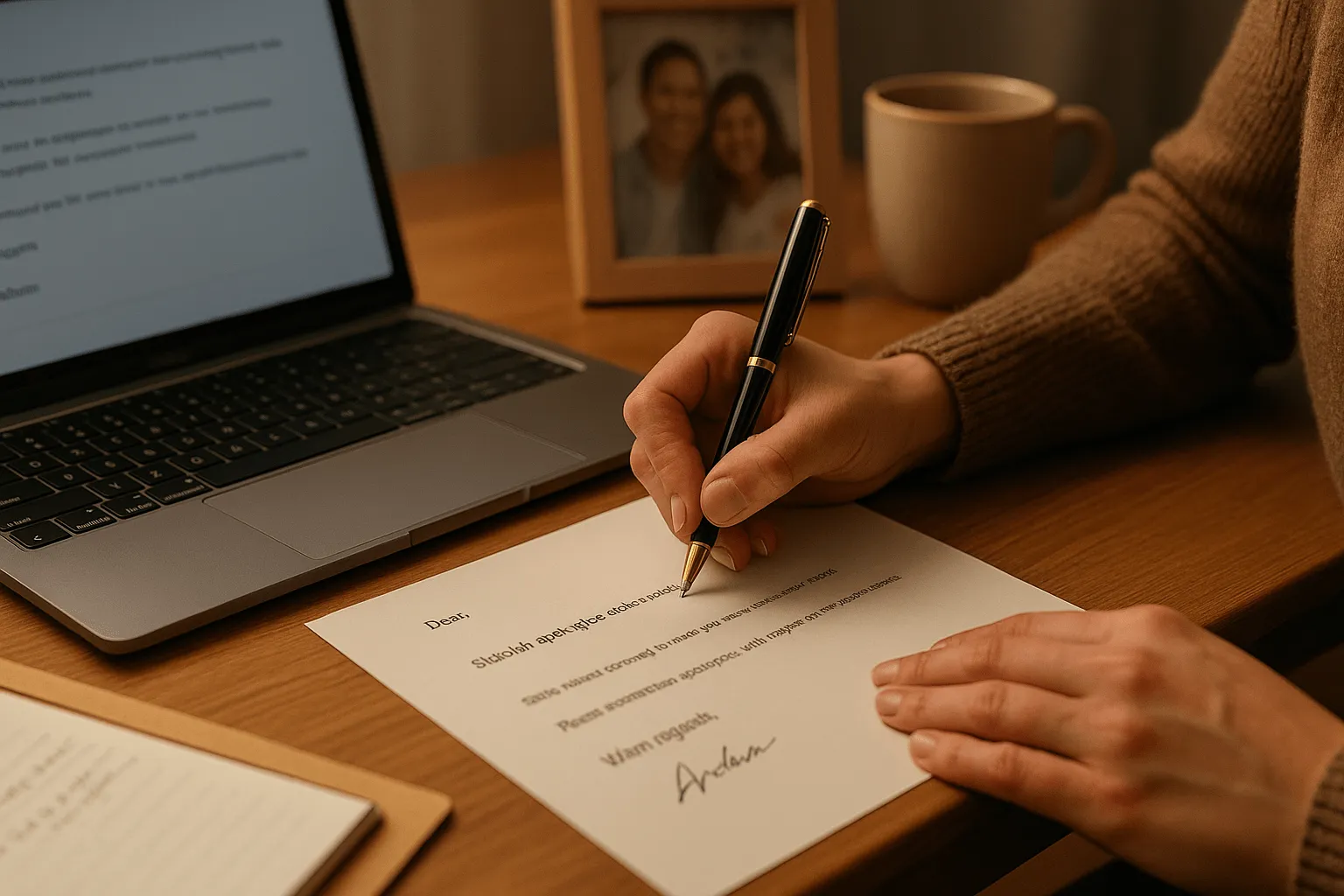
Your email should sound like it's from a person, not a robot. That’s the personal touch your reader needs to feel heard.
How to do it: Try these:
- Use the recipient’s name.
- Mention the specific issue (like a billing error or incorrect information).
- End with something warm like “Thanks again for your patience.”
Use closings like:
- “Warm regards,”
- “Best regards,”
- “Kind regards,”
Also, include your full name and company name. These small details go a long way.
5. Share What You’re Doing Differently Moving Forward
After a sincere apology, your reader wants to know—what changes now?
How to do it: Be clear and honest. Explain your corrective measures:
- “We’ve updated our system to avoid similar issues.”
- “Our team has reviewed the process to stop this from happening again.”
- “We’re improving our training on data entry after this recent mistake.”
This shows real effort. You're not just fixing this issue—you’re moving forward with better practices.
6. Reaffirm the Relationship
Don’t let the email end cold. Let the customer know you still care about the relationship and want to earn their trust back. If you haven't received a response, consider using effective follow-up email strategies to reconnect.
How to do it: Include one or more of the following:
- “We value your business and your feedback.”
- “We truly hope to rebuild trust and continue working together.”
- “Thanks again for your continued support and understanding.”
Add a follow-up offer:
- “Please reach out if you have any further questions.”
- “Let us know how we can better serve you.”
These lines help remind your reader they’re a valued customer—not just a complaint ticket.
7. Keep the Door Open for Feedback
When sending an apology email, show that you care about what your customer thinks. A strong subject line for an apology email can grab attention, but what happens after that matters too. Let them know they can provide feedback.
Why This Helps:
- It shows genuine remorse and a sincere apology.
- It invites the valued customer to speak up.
- It builds trust and helps you fix deeper issues.
How to Do It:
- Add a short line like: “We’d love to hear how we can do better.”
- Use an email template with a visible reply button.
- Include a sentence in the body like: “Please feel free to share your thoughts or suggestions.”
FAQs
1. When to personally apologize?
You should personally apologize when the mistake is serious or emotional. A personal apology builds trust. It’s best for situations like a wrong message, poor service, or inconvenience caused. Use a sincere tone. Don’t copy-paste. One honest sentence works better than long excuses.
“People will forget what you said but will never forget how you made them feel.” – Maya Angelou
2. How to handle formal vs. personal apology situations?
A formal apology works best in business. Use it when sending an apology email to a client, especially after a billing error or incorrect information. Use a professional apology email template.
For personal issues (like a missed deadline or wrong person), add a personal touch. Say you're sorry using a sincere apology and express regret in simple words.
Tip: Use the right email subject line to show you’re serious.
3. What’s the best way to show genuine remorse?
Be clear. Take full responsibility. Don’t blame others. Phrases like “I deeply regret the mistake” or “I sincerely apologize for the confusion” go a long way. Include a brief explanation but keep it short. End with how you’ll fix it (corrective measures).
4. Email Apology vs. In-Person Apology: When to Use Which
Use an email apology when time is tight, or the person is not nearby. It’s also better for internal processes or written records. But if the issue affected someone deeply, and you want to rebuild trust, go in-person. That’s when genuine apology matters more than format.
5. What to put at the end of an apology email?
Close with warmth. Sign off with kind regards, best regards, or warm regards. Offer help. Say something like:
"Please let me know if you have any further questions or need clarity."
Conclusion
Writing the right subject line for apology email makes all the difference. A sincere apology shows you care, but how you start matters just as much as what you say. Use an apology email template if you're unsure where to begin. Don’t forget to include your deepest apologies and demonstrate accountability. A short note like “sorry for the inconvenience” works too—just keep it honest. And if you're ever lost, check our free email template to write an apology email that really works.

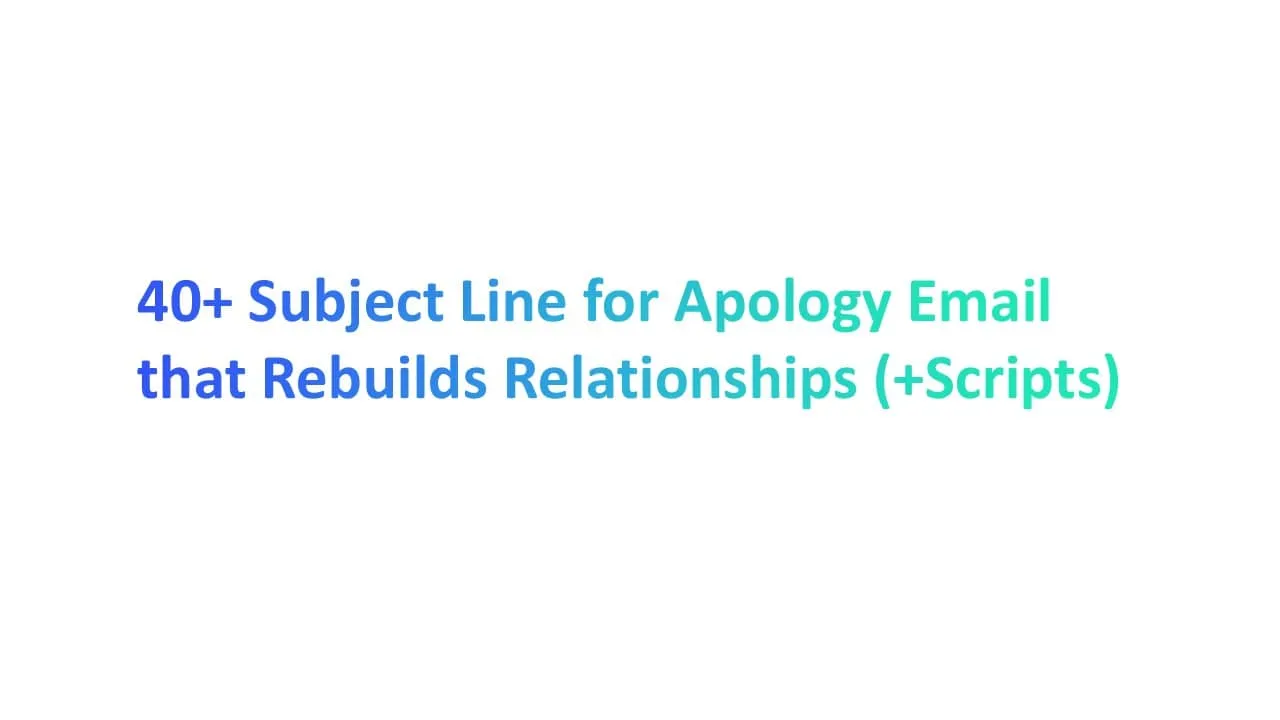



.png)
.jpg)

